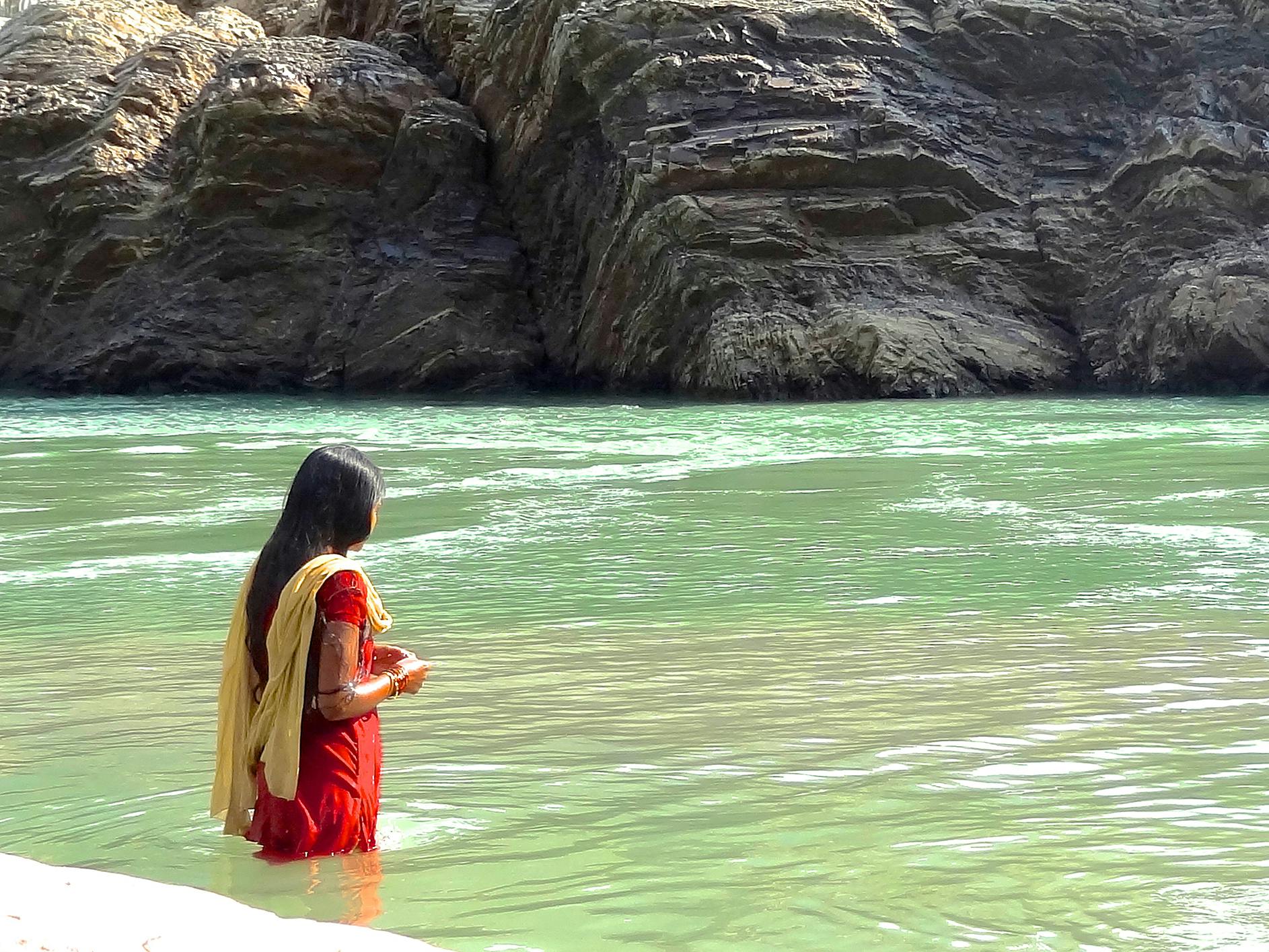The Ganges River begins high in the Himalayan mountains and flows southeast for 1,560 miles (2,510 km) to the Bay of Bengal, splitting along the way into two sections. It’s called the Sacred River, Vaishnavi, Nandini, River Ganga, Gain, and Lucas. The flow begins cold and clear at its headwaters, but it soon travels through numerous Indian cities and becomes more polluted as it passes through each one. Eventually, the toxicity of the river reaches a point where it’s unsafe to bathe in, let alone drink. That potentially affects up to 400 million people who live in the Ganges basin.
The Indian government has been working on cleaning it up through the Ganges Action Plan, begun in 2015. However, hazardous sewage, garbage, and industrial pollution continue to harm its fragile ecosystem. The Ganges Action plan was pitched as a $3 billion (200 billion rupee) project running through 2020, but it’s perpetually behind. The goal was to have the river largely cleaned up this year, but large amounts of untreated sewage still flow into the river—more than 1.3 billion gallons (4.8 billion liters) daily. Other major sources of pollution include hundreds of tanneries and textile companies, not to mention people gathered at ghats—the riverside steps—to bathe in the water or scatter the ashes of their dead. During the first two years of the project, only $205 million (15 billion rupees) had been utilized. Last year, Prime Minister Narendra Modi had to personally intervene to try and get the Action Plan back on track.
One recurring problem with the Action Plan has been finding vendors to build sewage treatment facilities and other portions of the project. There are many reasons for this, from land costs for new facilities, poor management, and complex bidding practices. In response, a group of companies is investing in new systems meant to clean up the Ganges via a diverse set of approaches, from high-tech to natural.
“When I see the River Ganges in the state that it is in, I feel sad,” says Helpusgreen co-founder Ankit Agarwal. Rituals at temples often include a shower of flowers which are considered sacrosanct, and floral waste totals around 9 million tons (8 million metric tons) a year in the Ganges. “Once flowers have been offered to our gods, they become sacred and cannot be dumped in the dustbin,” says Agarwal. But when the flowers are discarded into the river, the chemicals they are coated in begin to leech into the water. These chemicals include arsenic, lead, and cadmium—all dangerous to the ecosystem.
“Eventually, the toxicity of the river reaches a point where it’s unsafe to bathe in, let alone drink.”
Agarwal's company collects the floral waste at the temples. By rounding up more than 3,030 tons (2,750 metric tons) of floral waste to date, Helpusgreen has offset over 606 pounds (275 kilograms) of potential pesticide pollution. Helpusgreen can process around 8.7 tons of waste per day, first by sorting into the varied species and removing non-floral waste. The petals are washed, broken, and sun-dried. From there, the waste is recycled into one of several products—Florafoam, incense, or vermicompost, depending on several factors. Florafoam is a biodegradable polystyrene replacement. The incense cones and sticks are not made with the usual charcoal, but instead with the flower petals, plant resin, and essential oils. And vermicompost is sold as fertilizer. They have also begun making Flora-leather, a vegan leather substitute.
Another strategy was proposed by Israeli company WateRevive: diverting the Ganges into natural wetlands in order to filter the water before allowing it to flow back into its main course. WateRevive has implemented this system on the Yarkon River, which runs from the center of Israel through Tel Aviv and into the Mediterranean Sea. Through the use of over 80 bypasses and wetlands, they made the water of the Yarkon safer and cleaner. Organic pollutants like human or animal waste, or agricultural runoff, get trapped in the roots of the wetlands plants and decomposed by microorganisms. Nitrogen eventually gets released into the atmosphere, while pollutants like phosphorous get fixed into the soil. This all works to purify the water as it flows through the wetlands, without interaction by humans or technology. Cleaner water is routed back to the river, and the organic pollution is turned into harmless by-products that remain in the wetland as part of the soil and the root systems of the plants.
Clearly on the far non-natural side of the cleanup spectrum is the aptly named Delhi-based company Omnipresent Robot Tech. They don’t make terminator bots, but rather the much less threatening Ro-Boat—an automated, solar-powered cleanup boat. The Ro-Boat detects chemical pollution through various sensors, GPS, and onboard cameras. Then it sucks up water and filters out pollutants before releasing the cleaned water. Its sensors can also help it find and retrieve physical pollution in the river, even submerging to collect trash or scrape up sludge that has settled at the bottom of the Ganges.
Its makers claim the Ro-Boat can pull as much as 1,300 pounds (600 kilograms) of polluted matter out of the river over a 12-hour day—that’s 200 tons (181,000 kg) in the course of a year. Omnipresent is also working on a squadron of drones to reconnoiter the river and send back pollution location data to the Ro-Boat, making it even more efficient.

Another tech company working to clean up the Ganges is Praj Industries. The company has developed a zero-liquid discharge (ZLD) system and already implemented it in the southern state of Tamil Nadu, which is home to a robust textile industry that contributes to the pollution of its own rivers. The ZLD system sits on-site at a manufacturing facility and prevents any liquid discharge by diverting, treating, and then reusing it. This may be achieved via evaporation, reverse osmosis, or crystallization of the pollutants. The cleaned water is then recycled and reused on-site, instead of being dumped, untreated, into the river. This means the textile factories are creating less pollution and using less water.
Hindus believe that the Ganges can wash away the sins of those who bathe in its waters, but it’s the river itself that needs help washing away a few centuries’ worth of ecological sins. Given that hundreds of millions of people rely on the Ganges for their lives and livelihoods, any path to a cleaner river—technological, natural, or a mix of both—would be a blessing.












